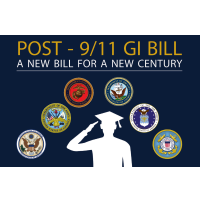Has Post-9/11 GI Bill been Successful? No Way to Know

Although the federal government has spent about $30 billion since 2009 for “G.I. Bill” education benefits, it does not track retention and graduation rates among students and so has no hard data on how well—or poorly—they are doing. That has veterans’ advocates worried that Congress will cut benefits as the troops come home from Afghanistan: “History proves to me that it’s a very, very real threat,” says Michael Dakduk, executive director of Student Veterans of America. “This is a benefit that could definitely be scaled back as involvement winds down overseas—unless we can prove a return on investment.”
Introduced in 2007 by Sen. Jim Webb (D-Virginia), a Vietnam War veteran and former secretary of the Navy, the Post-9/11 GI Bill is modeled after the 1944 GI Bill, which educated 7.8 million World War II veterans and is credited by economists as one of the key pillars of post-War prosperity. Today’s GI Bill has paid about $30 billion for almost 1 million Iraq and Afghanistan veterans to go to school since 2009, a number projected to top $42 billion in 2014. About four academic years’ worth of benefits are available for use toward graduate and undergraduate degrees, as well as technical training of various kinds.
That technical training—especially when it takes place at for-profit schools like the University of Phoenix, ITT Technical Institute or Kaplan University—has drawn close scrutiny for collecting GI Bill money. In 2010, Sen. Tom Harkin (D-Iowa) started a two-year investigation into for-profit colleges from his perch atop the Senate Committee on Health, Education, Labor and Pensions.
The Senate learned that, during the 2010-2011 school year, eight of the top 10 schools for getting GI Bill funds were for-profit schools, which the year before collected nearly as much per student ($8,337) as private schools like Harvard or Stanford ($8,409). Public institutions averaged about $3,418 a student, according to Veterans Administration data.
At a July Senate hearing before the Homeland Security and Governmental Affairs Committee, veterans complained that for-profit schools “target” veterans as “nothing more than dollar signs in uniform.” For-profit schools use veterans to avoid a federal requirement that no more than 90% of their revenues can come from government sources like Pell grants—but a loophole says that GI Bill benefits don’t count toward the 90% cap. This makes the veterans’ aid more valuable, and the Senate committee report cited constant phone calls by recruiters, pressuring applicants to sign contracts before speaking to a financial adviser, and similar tactics as evidence of a mercenary attitude at the for-profits.
Steve Gunderson, CEO of the Washington D.C.-based lobby Association of Private Sector Colleges and Universities, claimed in an interview that the lack of data on veterans makes the criticism of for-profit schools as a class unfair: “There are good and bad schools in all of higher education. But they should go after the bad schools and not a whole sector.”
That data may not be forthcoming any time soon. The U.S. Department of Education has suggested a tracking system that would be in place for the 2014-2015 school year and collect data from the previous school year, but the project has not yet been approved or budgeted.
In the meantime, partial data will have to be sufficient for the public and policy makers. In 2011, Operation College Promise began a six-year survey to track about 700 GI Bill students on 21 campuses nationwide. Although the first tranche of data is not yet available, the early numbers are promising, according to Wendy Lang, executive director of the program.
“They’re progressing toward a degree just as efficiently, if not more efficiently, than your traditional student,” she said.
-Matt Bewig
To Learn More:
GI bill Covered Tuition for Nearly a Million Post-9/11 Veterans without Tracking their Progress (by Meg Wagner, Anthony Cave & Hannah Winston, News21)
- Top Stories
- Unusual News
- Where is the Money Going?
- Controversies
- U.S. and the World
- Appointments and Resignations
- Latest News
- Trump to Stop Deportations If…
- Trump Denounces World Series
- What If China Invaded the United States?
- Donald Trump Has a Mental Health Problem and It Has a Name
- Trump Goes on Renaming Frenzy






Comments